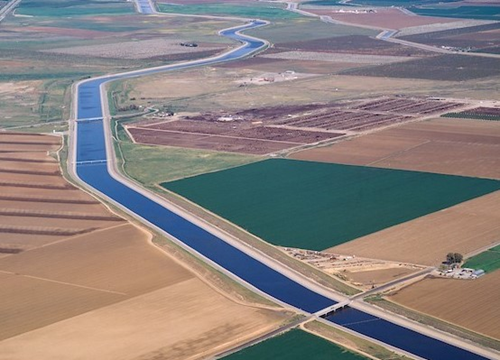California Aqueduct Subsidence Program - Tribal Engagement

The California Aqueduct
Tribal engagement is an important component of every major project led by the State of California, providing an opportunity for government-to-government consultation, and collaboration and coordination between Tribal leaders and project proponents. Guided by the Governor’s Executive Order B-10-11, the Department of Water Resources’ (DWR) Tribal Engagement Policy, the California Environmental Quality Act (CEQA) and state policies regarding consultation with California Native American Tribes, the California Aqueduct Subsidence Program’s (CASP) planning process includes significant Tribal engagement. This includes engagement with California Native American Tribes on Tribal Cultural Resources (TCRs) in accordance with the requirements of CEQA (Sections 21080.3.1, 21080.3.2, 21082.3 of the California Public Resources Code), commonly referred to as AB 52 requirements (added to CEQA through Assembly Bill 52 of 2014).
DWR is committed to a robust, collaborative, and transparent Tribal engagement process that provides for meaningful information sharing and opportunities for input. Below is a record of pertinent DWR CASP planning process Tribal engagement activities by project year.
DWR Tribal Engagement - CASP: 2020 to Present
DWR is conducting Government-to-Government consultation with all Tribal governments that requested consultation with DWR pursuant to the California Public Resources Code or DWR’s Tribal Engagement Policy.
DWR is committed to a robust, collaborative, and transparent Tribal engagement process that provides for meaningful information sharing and opportunities for input. Below is a record of pertinent DWR CASP planning process Tribal engagement activities by project year.
DWR Tribal Engagement - CASP: 2020 to Present
DWR is conducting Government-to-Government consultation with all Tribal governments that requested consultation with DWR pursuant to the California Public Resources Code or DWR’s Tribal Engagement Policy.
- Feb. 8, 2024: Tribal Informational Meeting #4 for invited California Native American Tribes
- Jan. 10, 2023: Tribal Informational Meeting #3 for invited California Native American Tribes
- Nov. 16, 2022: DWR Sent notification letter inviting Tribes to an informational meeting about the program status and upcoming efforts.
- Project Webpage
- January-March 2021: DWR outreach, by phone and e-mail, to Tribes that did not respond to the December project notification letters.
- December 21, 2020: DWR sent notification letters to all Tribes located in the counties with the "project area" of the San Luis Canal Embankment and Liner Raise Geotechnical Investigations Project, which includes Kings and Kern Counties, at the addresses provided by the Native American Heritage Commission (NAHC). The Project notification letters provided project description information and an invitation to consult with DWR under AB 52 and DWR's Tribal Engagement Policy
- Project Webpage
- October 16, 2024: DWR sent notification and letters to all Tribes located in the counties within the "project area" of the Pools 24 & 25 Liner Raise and Instrumentation Project, which includes Kings and Kern Counties, at the addresses provided by the Native American Heritage Commission (NAHC). The project notification letters provided project description information and an invitation to consult with DWR under DWR's Tribal Engagement Policy.
- April-October 2020: DWR conducted consultation with Tribes that indicated interest in consulting.
- April 28, 2020: DWR outreach, by phone and email, to Tribes that did not respond to the April 16 project notification letters.
- April 17, 2020: DWR sent notification letters to all Tribes located in the counties within the “project area” of the Pools 24 & 25 Liner Raise and Instrumentation project, which includes Kings and Kern Counties, at the addresses provided by the Native American Heritage Commission (NAHC). The project notification letters provided project description information and an invitation to consult with DWR under AB 52 and DWR’s Tribal Engagement Policy.
- October 16, 2024: DWR sent notification letters to all Tribes located in the counties with the "project area" of the Pools 17 & 18 Liner Raise Project, which includes Kings and Kern Counties, at the addresses provided by the Native American Heritage Commission (NAHC). The Project notification letters provided project description information and an invitation to consult with DWR under AB 52 and DWR's Tribal Engagement Policy.
- October 16, 2024: DWR sent notification letters to all Tribes located in the counties with the "project area" of the Pools 20 & 21 Liner Raise Project, which includes Kings and Kern Counties, at the addresses provided by the Native American Heritage Commission (NAHC). The Project notification letters provided project description information and an invitation to consult with DWR under AB 52 and DWR's Tribal Engagement Policy.
- Project Webpage
- August 28, 2024: DWR conducted consultation with Tribes who indicated interest in consulting.
- January 24, 2024: DWR sent notification letters to all Tribes located in the counties with the "project area" of the Subsidence and Groundwater Monitoring Wells project being covered under a Mitigated Negative Declaration, in Kern, at the addresses provided by the Native American Heritage Commission (NAHC). The Project notification letters provided project description information and an invitation to consult with DWR under AB 52 and DWR's Tribal Engagement Policy.
Contact Information
For more information on the California Aqueduct Subsidence Program or DWR Tribal engagement processes, please contact DWR's Tribal Policy Advisor, Anecita Agustinez, at:
Email:
tribalpolicyadvisor@water.ca.gov
Anecita.Agustinez@water.ca.gov
Phone: (916) 216-8637
Email:
tribalpolicyadvisor@water.ca.gov
Anecita.Agustinez@water.ca.gov
Phone: (916) 216-8637
